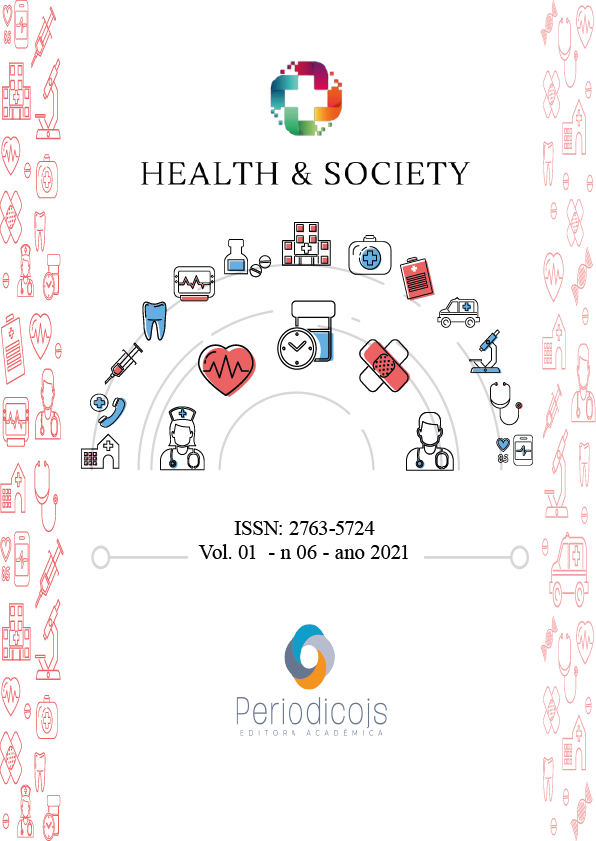Resumo
Introduction: Penile cancer are rare neoplasms, being more frequent in men aged 50 years or older, although it may affect men of any age. Unfavorable socioeconomic conditions, poor intimate hygiene, HPV infections, among others, are risk factors for this type of cancer. Objective: To know the profile of penile cancer in patients living in the state of Minas Gerais, Brazil. Methods: A descriptive study of quantitative approach was conducted through data from patients diagnosed with penile cancer in hospital records of the José Alencar Gomes da Silva National Cancer Institute (INCA). Results and discussion: In the period from 2015 to 2019, 573 diagnoses of penile cancer were recorded in the database of the José Alencar Gomes da Silva National Cancer Institute (INCA). Conclusion: Men aged between 50 and 74 years, married, brown and with incomplete high school were identified, the main occupation was agricultural worker. It is essential that in order to face this problem, men's health is considered routinely and systematically in the routine health services.
Referências
BLEEKER M.C et al. Penile cancer: epidemiology, pathogenesis and prevention. World J Urol, v. 27, n. 2, 2009, p. 141-150.
BRASIL. Conselho Nacional de Saúde. Resolução nº 466, de 12 de dezembro de 2012. Aprova norma regulamentadoras de pesquisa envolvendo seres humanos. Brasília: Diário Oficial da União, 2013. Disponível em: http:// bvms.saude.gov.br/bvs/saudelegis/cns/2013/res0466 12 12 2012.html. Acesso em: 10/11/2021.
DILLNER, J et al. Etiology of squamous cell carcinoma of the penis. Scand J Urol Nephrol Suppl, v. 1, n. 205, 2000, p. 189-93.
FAVORITO L.A et al. Epidemiologic Study on Penile Cancer in Brazil. International Braz J Urol, v. 34, n. 5, 2008, p. 587-593.
INSTITUTO NACIONAL DE CÂNCER JOSÉ ALENCAR GOMES DA SILVA (INCA). Tipos de câncer: versão para profissionais de saúde. Acesso em: 11/11/2021. Disponível em: https://www.inca.gov.br/tipos-de-cancer/cancer-de-penis/profissional-de-saude
`
KOIFMAN L et al. Epidemiological Aspects of Penile Cancer in Rio de Janeiro: Evaluation of 230 cases. Int Braz J Urol International Braz, v. 37, n. 2, 2011, p. 231-243.
NATIONAL HEALTH SERVICE. Penile Cancer Treatment –Health Professional Version. Disponível em: https://www.cancer.gov/types/penile/hp/penile-treatment-pdq. Acesso em: 17/11/2021
NATIONAL INSTITUTE FOR HEALTH AND CARE EXCELLENCE. NICE Guideline Suspected cancer: recognition and referral. Published: 23 June 2015. Disponível em: https://www.nice.org.uk/guidance/ng12/resources/suspected-cancer-recognition-and-referral-pdf-1837268071621.
SILVA REIS A.A et al. Aspectos clínico-epidemiológicos associados ao câncer de pênis. Ciência & Saúde Coletiva, v. 15, n. 1, 2010, p.1105-1111.
WORLD HEALTH ORGANIZATION. Early detection. Geneva: WHO, 2007. (Cancer control: knowledge into action: WHO guide for effective programmes, module 3). Disponível em: https://apps.who.int/iris/bitstream/handle/10665/43743/9241547338_eng.pd. Acesso em: 17/11/2021.
WORLD HEALTH ORGANIZATION. Guide to cancer early diagnosis. World Health Organization, 2017. Disponível em: https://apps.who.int/iris/handle/10665/254500.





